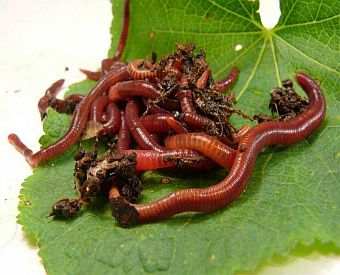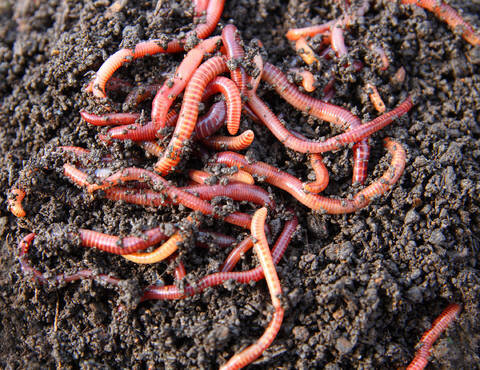Everything You Required to Understand About Red Wigglers for Composting
Red wigglers, or Eisenia fetida, play a crucial role in the realm of composting, transforming natural waste into important soil amendments. The process of setting up a worm bin and maintaining it can position obstacles.
What Are Red Wigglers?

(red worms for sale)
Native to The United States and copyright, red wigglers are surface-dwelling microorganisms that favor moist, cozy environments abundant in breaking down raw material. Their diet is composed mainly of rotting plant product, food scraps, and other organic debris, which they eat and damage down efficiently. As they digest this product, they produce nutrient-rich spreadings that enhance soil fertility.
Red wigglers are hermaphroditic, possessing both male and women reproductive organs, and can replicate quickly under optimal problems. On the whole, red wigglers are vital factors to the process of reusing natural waste into important compost.
Advantages of Making Use Of Red Wigglers
Utilizing red wigglers in composting systems offers various benefits that enhance both the efficiency of waste management and the quality of the resulting garden compost. These worms, medically called Eisenia fetida, are especially effective at damaging down organic issue, transforming kitchen area scraps and yard waste right into nutrient-rich garden compost at an accelerated price.
One of the key advantages of utilizing red wigglers is their ability to take in large quantities of organic material, typically refining their weight in food waste daily. This high consumption price brings about faster disintegration and lowers the quantity of waste sent to landfills. In addition, the spreadings produced by red wigglers are abundant in vital nutrients, valuable bacteria, and enzymes, making them a superb plant food for yards and plants.
In addition, red wigglers prosper in a range of settings, making them adaptable for both indoor and outdoor composting systems - red wigglers. Their presence in a compost bin helps to freshen the material, stopping odors and advertising a healthy composting procedure. In general, employing red wigglers not only adds to effective waste monitoring yet likewise sustains sustainable horticulture techniques through the manufacturing of top notch garden compost
(Lenoir Worm Farms)
Establishing Up Your Worm Container
To efficiently establish up a worm container, it is important to pick an appropriate container that satisfies the demands of red wigglers while providing a favorable atmosphere for composting. An appropriate bin can be made from plastic, timber, or metal, with a capacity of a minimum of 1 square foot for every pound of worms.
Make sure the container has sufficient drainage openings to prevent excess wetness, as red wigglers grow in a damp, yet not waterlogged, setting. red wigglers. The bin should additionally be ventilated to supply sufficient air flow, stopping anaerobic problems that might damage the worms
A perfect location for the worm bin is an awesome, dark area, free from straight sunshine and severe temperatures, as red wigglers prefer a temperature series of 55 to 77 levels Fahrenheit.
Before presenting the worms, prepare bedding products such as shredded paper, cardboard, or coconut coir, which will provide both environment and food. Dampen the bed linen gently to produce an inviting environment for the worms. Think about positioning a lid on the container to preserve moisture and decrease parasites, while ensuring it can be conveniently removed for maintenance.
Feeding and Care Guidelines
Feeding red wigglers is a vital element of maintaining a healthy and balanced composting system. image source These worms thrive on a diverse diet regimen, primarily composed of natural products such as vegetables and fruit scraps, coffee grounds, and smashed eggshells. It is vital to prevent feeding them meat, milk, and oily foods, as these can develop undesirable odors and draw in pests.
When presenting food to your worm bin, slice or shred materials into smaller pieces to assist in quicker disintegration. Beginning with small amounts to determine the worms' consumption price, gradually boosting the amount as they adapt. It is a good idea to alternative feeding locations within the bin to motivate detailed blending and oygenation of the compost.

Troubleshooting Common Issues
Keeping a thriving worm composting system can occasionally offer challenges that call for focus and troubleshooting. Common concerns include an undesirable odor, which commonly indicates overfeeding or the presence of anaerobic problems. To fix this, decrease the amount of food added and make sure correct aeration by blending the bed linens product.
Another regular problem is the getaway of worms from the bin. This can occur due to extreme dampness or inappropriate ecological conditions. Consistently inspect the moisture degrees, going for a damp but not soggy consistency, and keep optimum temperatures in between 60-80 ° F(15-27 ° C )to create a comfy habitat for your red wigglers.
Parasites, such as fruit flies, can likewise attack worm bins. red wigglers. To battle this, cover food scraps with a layer of bed linen or shredded paper to discourage flies from laying eggs. Furthermore, make sure that any kind of food added is fresh and without mold and mildew, which can draw in unwanted pests
Lastly, if your worms seem non-active, examine for stress and anxiety aspects such as temperature fluctuations or insufficient moisture. Dealing with these common issues will assist preserve a healthy and productive worm composting system.
Verdict
In recap, red wigglers, or Eisenia fetida, play an essential role in sustainable waste monitoring via vermicomposting. Proper setup and maintenance of a worm container, along with adherence to feeding guidelines, ensure a thriving environment that lessens land fill payments.